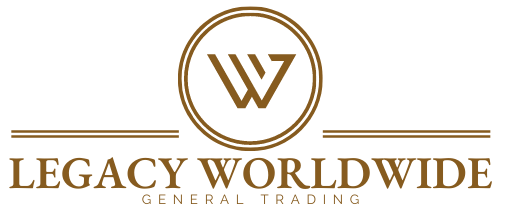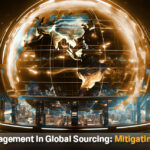A smooth supply chain is super important for a business to do well. It keeps things running without a hitch, saves money, and makes customers happy. But today’s supply chains have many problems like global disruptions and rules that always change. Actually, a study showed that 60% of supply chain leaders think COVID-19 made supply chains way more important than they were before.
Striking a right balance between supply chain efficiency and risk is the real thing. So this blog post is all about the problems supply chain businesses encounter, and we have got some tips on how to make things work better.
What is Supply Chain Efficiency?
Supply chain efficiency is the process of making the system function smoothly. The right strategy helps slash costs, and provides the best value to customers. It’s important to consider that bringing efficiency in the supply chain is not about cost saving. A strong supply chain helps businesses adjust to market changes, reduce risks, and grow steadily.
The use of technology is paramount for building an efficient supply chain as it simplifies workflows, and makes decisions based on data. Here are five key elements that drive supply chain efficiency:
1. Smooth Processes
Removing the bottlenecks and redundant tasks can greatly help in keeping the operations smooth. We can understand this with an example like you can optimize warehouse layouts or automate repetitive tasks to save considerable time and reduce delays.
2. Adoption of Technology
The integration of technology in the supply chain has become a necessity. Tools like IoT for real-time inventory updates and AI for demand forecasting are also reshaping the industry landscape. These enable enhanced oversight, risk mitigation, and enable faster decision-making.
3. Data-Led Decisions
Keeping a close eye on the historical and real-time data can help predict trends. Moreover, the data helps optimize inventory, and we can develop contingency plans for disruptions. Resource allocation becomes effortless when the data is used.
4. Supplier Collaboration
Establishing strong partnerships can improve communication, the quality of products, and the delivery process. Collaboration on solutions like production alignment or real-time updates can reduce errors and build resilience in the supply chain.
5. Continuous Monitoring
Regularly evaluate performance metrics like delivery timelines and accuracy. Audits and feedback refine processes and keep the supply chain aligned with evolving needs.
Risks in Supply Chain Management
Before improving efficiency, businesses must address risks that can disrupt operations. Below are some major challenges:
1. Supply Chain Disruptions
Natural disasters, pandemics, or political issues can totally shut things down. Like, the car industry lost a whopping $210 billion in 2021 just because they couldn’t get enough chips.
2. Regulatory Compliance
Dealing with trade rules, customs stuff, and environmental standards is a never-ending hassle. If you don’t keep up, you could face delays, fines, and a bad reputation.
3. Cybersecurity Issues
Supply chains are becoming more and more vulnerable to cyberattacks because of digitalization. Apparently, a Deloitte study found that around 40% of manufacturing companies’ supply chains have been hit by cyberattacks.
4. Dependency on Single Suppliers
Relying on one supplier can magnify risks. Disruptions at their end can cascade across your operations, leading to delays or losses.
Strategies to Mitigate Risks
A supply chain that works perfectly is not just a network; it’s a system that adapts to each risk and functions with perfection. The following are some key tactics that firms can use for optimizing supply chains.
Build Resilient Supply Chains
Resilience is, therefore, the backbone of any good supply chain. Flexibility in operation helps in responding to all forms of challenges that may arise from a wide variety of sources that include natural calamities, political uprisings, and failures of suppliers in meeting their commitments.
Steps to Build Resilience:
- Diversify Suppliers: Source materials from multiple locations to minimize the impact of localized disruptions. For instance, companies with diversified suppliers managed the global chip shortage more effectively than those dependent on a single source.
- Establish Contingency Plans: Prepare alternate shipping routes and maintain relationships with backup suppliers. Regularly review these plans to adapt to changing market conditions.
- Invest in Local Sourcing: Mixing global and local sourcing can help reduce delays and cut transportation costs. This hybrid approach makes supply chains stronger and less affected by international disruptions.
Use of Technology for Visibility
Technology makes it possible to improve decision-making via operational monitoring. A holistic picture of all the activities involved makes risk identification and response more proactive.
Selection of Tools:
- IoT Sensors: These are the devices that prove to be instrumental in the monitoring of inventory, storage conditions, and shipments. With real-time data, you can check certain aspects like tracking the quality of items during the transit phase that are sensitive to temperature.
- AI – Predictive Analytics: AI models and algorithms can take help of predictive analytics to check supply and demand changes.
- Blockchain: With the use of blockchain, you can create secure records of transactions. This adds more transparency in tracking product movements. Plus, we can also reduce the risk of counterfeit goods.
Build Strong Supplier Relations
Suppliers are super important for a smooth supply chain. If you’ve got a good relationship with them, based on trust, it makes the whole chain stronger.
How to Collaborate with Suppliers:
- Regular Performance Reviews: Evaluate suppliers on a periodic basis to see if they meet quality and delivery standards. Make use of feedback loops to address performance gaps.
- Long-Term Agreements: Build partnerships that focus on mutual growth and shared accountability. Long-term agreements help suppliers align better with your strategic goals.
- Support Sustainability Initiatives: Partner with suppliers who adopt eco-friendly measures. Businesses can offer shared incentives for meeting sustainability goals. These could include reduced transportation emissions or waste reduction.
Optimize Inventory
Having your business inventory properly managed also helps control costs, meet customer needs, and prevent excess or less stock. Careful planning and smart technology is required to keep inventory at the right level.
Best Practices for Inventory Management:
- Just-in-Time (JIT) Strategies: Use JIT methods to keep only what you need in stock. Reduce extra inventory and make sure your products are ready when needed.
- Automated Reordering Systems: Use technology to monitor inventory levels and automatically reorder items when stock depletes.
- Analyze Demand Trends: Use data to match inventory with seasonal trends so you can avoid overstocking or shortages.
Benefits of an Efficient Supply Chain
Higher Profit Margins
Efficient supply chains reduce waste, lower costs, and boost profits. This study conducted by Invesp revealed that supply chain optimization was capable of reducing the supply chain cost by an alluring 15%. Also, businesses with optimized supply chains have a 79% chance of posting a higher revenue growth than their industrial average.
More Customer Satisfaction
On-time deliveries and reliable quality build customer loyalty. McKinsey reports that businesses with efficient supply chains have 30% higher customer retention rates.
Better Market Adaptability
An agile supply chain adapts quickly to market changes, helping businesses stay competitive in unpredictable situations.
Future Trends in Supply Chain
As supply chains continue to change, businesses are adopting new solutions to stay competitive and efficient. Future trends focus on automation, sustainability, and data integration. Let’s take a closer look at these key trends.
AI-Driven Automation
AI rollout is gradually impacting the supply chain by transforming processes, forecasting demand, and improving decision-making. The effectiveness of AI in handling large volumes of information in a reasonably short time minimizes risks, and increases organizational performance.
Applications of AI in Supply Chain:
- Demand Forecasting: AI accordingly takes the historical figures of sales, trends in the sales figures throughout the year, and the overall market trends to forecast demand figures. It assists enterprises in avoiding excessive production and stockouts yet at the same time achieve optimum inventory levels. For instance, using artificial intelligence, Amazon continuously and in real-time adjusts stock between its different warehouses.
- Process Automation: By automating tasks like order processing, shipment tracking, and invoicing, AI frees up valuable time for teams to focus on strategic priorities.
- Predictive Maintenance: AI continuously monitors equipment performance to anticipate maintenance needs. This approach minimizes downtime.
Green Supply Chains
It is now essential to be sustainable, rather than optional. There are increasing expectations for eco-friendly practices from both customers and regulators.
Strategies for Green Supply Chains:
- Adopt Renewable Energy: Switch to energy sources like solar or wind for manufacturing and logistics to lower carbon emissions. For example, Walmart aims to run on 100% renewable energy by 2035.
- Green Logistics: Use electric vehicles and optimize delivery routes with AI to cut fuel use and emissions. Companies like DHL are pioneering this with electric fleets and carbon-neutral delivery options.
- Sustainable Packaging: Replace traditional materials with biodegradable or reusable options to reduce waste. Nestlé, for instance, plans to use 100% recyclable or reusable packaging by 2025.
Conclusion
Managing supply chain risks can be hard, but smart strategies help. Companies that prepare properly, use modern technology, and build good supplier relationships can handle problems better and keep things running smoothly.
Improving your supply chain starts with clear steps and ongoing efforts. Businesses that follow this path can succeed in the long run, increase efficiency of the supply chain and keep customers happy.
Legacy Worldwide simplifies every stage of the sourcing process by serving as your dedicated partner and single point of contact. From managing supplier relationships to seamless operations, we address challenges with practical solutions that drive results. We turn potential roadblocks into strategic opportunities, and empower businesses to increase their supply chain efficiency.
Sources
- (How COVID-19 impacted supply chains and what comes next -EY)
- (The Growing Threat of Supply Chain Attacks – LinkedIn)
- (The State Of Supply Chain Management – Statistics and Trends – Invesp)
- (How can businesses effectively balance cost reduction and sustainability in their supply chains? – Vorecol)
- (Walmart Sustainability)
- (Waste Packaging Strategy – Nestle)










